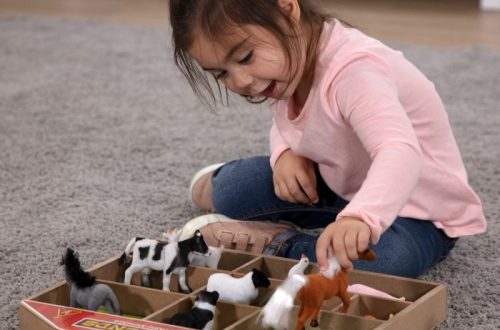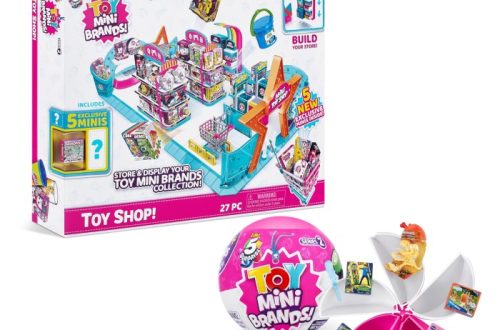The Early Days: Ern? Rubik’s Initial Creation
In 1974, a Hungarian architect named Ern? Rubik embarked on a quest. His goal? To devise a teaching tool that would help his students understand 3D space. After months of trial and error with wood, paper, and adhesives, Rubik created his first working model. It was a twistable cube, a puzzle that would later capture the world’s imagination.
Rubik’s early prototype was a clunky, yet intriguing wooden block. Rubber bands and paper clips held its pieces together. This rough version set the stage for an invention that few could predict would become a global hit. It invited users to mix up its colored squares and then, challenge them to restore the cube to its original state.
Unknowingly, Rubik had just laid the groundwork for what would be known as the Rubik’s Cube. Initially seen as a simple toy, the depth of its challenge quickly became apparent. It presented a staggering number of possible combinations – over 43 quintillion – ensuring that solving it was no trivial feat.
It was Rubik himself who first faced the task of returning the jumbled cube to its neat arrangement of uniform sides. That first puzzle took him an entire month to solve. This success showed Rubik, and later the entire world, the cube’s potential not just as a model for teaching, but also as a fascinating puzzle for all ages.
From these early days, the Rubik’s Cube started its journey. It moved from a curious object on a Hungarian architect’s desk to an international phenomenon. An object of curiosity, creativity, and complex problem-solving had been born. Rubik had invented not just a cube, but a cultural icon whose appeal stretched far beyond its simple plastic edges.
From a Teaching Tool to a Global Sensation
The Rubik’s Cube began as a simple object. It was meant to help students learn about spatial relationships. What started as an educational device quickly grew into something larger. This puzzle sparked global attention and captured the fascination of people everywhere.
Ern? Rubik, the cube’s inventor, had modest intentions. The Hungarian architect crafted the cube for his architecture students in Budapest. He did not foresee it turning into a cultural icon. The cube was first called the ‘Magic Cube’ in Hungary. It made waves at toy fairs and students’ circles due to its engaging complexity.
When the Magic Cube reached markets beyond Hungary, its popularity skyrocketed. The cube’s breakout moment came after it was rebranded as the ‘Rubik’s Cube’. This was when it touched down at the Nuremberg Toy Fair in 1979. From there, the toy company Ideal took it to global heights.
The cube’s design was simple and elegant. It crossed language barriers and became appealing to various age groups. It did not require any instructions. This made it highly accessible and thereby more popular. It was small and portable, adding to its charm. People found themselves captivated, trying to solve the puzzle in myriad ways.
Sales figures soared, with millions sold in just a few years. Rubik’s Cube swiftly became a household name. It sparked a new sort of competition with the onset of ‘speedcubing’. This competitive angle introduced the cube into sports-arena-like settings.
Despite being a simple teaching tool, the Rubik’s Cube became a global sensation. People enjoyed and struggled with its challenge. The journey of Rubik’s Cube from an architect’s desk in Budapest to a worldwide phenomenon is truly extraordinary.
The Patent Path: The Magic Cube Goes Public
In 1975, Ern? Rubik’s creation took shape. He applied for a patent in Hungary. Rubik’s ‘Magic Cube’ had been a teaching tool. Now, it was set to become much more. The patent marked its first step into the public eye.
Rubik had not foreseen the puzzle’s upcoming fame. His focus had been on his students’ learning. Yet, as the patent process unfolded, a new chapter began. His invention could now reach a wider audience.
The Magic Cube debuted at the Nuremberg Toy Fair in 1979. There, the Ideal Toy Corporation saw its potential. The cube was rebranded, taking on Ern? Rubik’s name. From then on, it was ‘Rubik’s Cube’.
Success was swift. By the early 1980s, the Rubik’s Cube appeared in stores and media worldwide. It transitioned from an educational tool to a must-have toy. Popular culture welcomed the cube. The patent that Rubik secured was the turning point.
Television, art, and competitions celebrated the Rubik’s Cube. It influenced areas from design to music. Its visual appeal and mental challenge attracted all sorts of people. The Rubik’s Cube was not just a puzzle. It was a cultural phenomenon.
The patent journey shows one key step. It brought Rubik’s Cube from a Hungarian classroom to global fame. That legal stamp allowed many to experience the cube’s unique challenge. The patent path transformed Rubik’s initial creation into an everlasting icon.
The Rubik’s Cube and Its Cultural Impact
The Rubik’s Cube transcends its identity as a puzzle. It soared into popular culture, fascinating millions. With its vibrant colors and intricate challenge, it appeared everywhere. In movies, shows, even on clothes, the cube stamped its mark.
People worldwide bonded over this puzzle’s allure. They gathered to solve, share techniques, and build community. Artists transformed the cube into stunning sculptures, elevating it to an art form. The cube wasn’t just a toy; it was a canvas for creativity.
This simple cube also struck chords in education. It became a tool to teach mathematics, specifically group theory. The cube’s relationship with science and math introduced new ways to engage with complex ideas.
Competitive ‘speedcubing’ merged the cube with sportsmanship. Challengers raced against each other and the clock, creating a thrilling spectator event. This brought a new dynamic to problem-solving – it was now a sport.
In classrooms, bedrooms, and competitions, the Rubik’s Cube thrived. It was more than a brain teaser. It was a bridge across cultures, a shared language of curiosity and joy. Young or old, everyone could appreciate its genius.
The cube’s imprint on culture is undeniable. It’s a symbol of the ’80s, a muse for the artistic, and a beacon for the intellectually curious. It illustrates how simple ideas can evolve into cultural phenomena. The Rubik’s Cube is not just about solving. It’s about inspiration, connection, and the manifestation of human ingenuity.
The Rubik’s Cube Phenomenon: A Mathematical Marvel
The Rubik’s Cube is not just a toy. It’s a mathematical marvel. Ern? Rubik, who invented the cube, saw it as a way to help his students learn about spatial relationships. Little did he know, it would become a symbol of problem-solving brilliance.
This puzzle toy, with each side presenting nine squares in uniform color, holds a challenge. To solve it, one must twist and turn the smaller cubes until each side shows one solid color. The process is a mind-bending exercise in mathematics and logic.
The phenomenon lies in the cube’s vast possibilities. With over 43 quintillion combinations, the chances of repeating a pattern are slim. This immense number speaks to the cube’s complexity, drawing in math enthusiasts, puzzle solvers, and curious minds alike.
To master the Rubik’s Cube, learners often delve into group theory, a mathematical study of symmetry. Crafting a sequence of moves to solve the puzzle illustrates this theory in a practical and engaging way. It’s a hands-on experience in mathematics that appeals to both the student and the hobbyist.
Beyond its use in education, the cube has inspired countless artworks, films, and even competitive sports like speedcubing. This competitive edge has introduced a new level of excitement to problem-solving. Players race against the clock to complete the cube, making it not only an intellectual challenge but also a spectator sport.
The wonder of the Rubik’s Cube lies in its simplicity and depth. It’s simple enough for a child to twist and turn, yet complex enough to hold the attention of serious mathematicians. Who invented the Rubik’s Cube matters less now than the phenomenon it has become: a ubiquitous icon of puzzles and mathematical challenge.
Competitive Cubing and the Digital Age
The Rubik’s Cube has evolved far beyond a quirky puzzle. It’s become a competitive sport known as speedcubing. This sport draws crowds to witness fast fingers and sharp minds. It’s where cubers twist and solve puzzles at astonishing speeds. Digital platforms have been central to speedcubing’s rise. They’ve become the modern arena where cubers learn and share.
Speedcubing competitions ignite passion worldwide. Teenagers especially have taken to this sport, setting remarkable records. They solve the Rubik’s Cube blindfolded, underwater, even while skydiving. This has fueled a global community. They connect through forums, social media, and YouTube channels.
Ern? Rubik couldn’t have imagined his cube in today’s digital age. Videos on how to solve the cube, uploaded by this community, guide newcomers. Advanced cubers use these platforms for sharing techniques. They create content that inspires and aids others in mastering the puzzle.
The Digital Age has also ushered in new ways to engage with speedcubing. This includes virtual competitions and live-streamed events. Enthusiasts from around the world participate. They don’t just watch; they interact. They discuss strategies and celebrate achievements in real-time. This global village of cubers only grows, as digital tools make the sport more accessible.
In summary, the Rubik’s Cube has transcended its original purpose. It’s now part of a digital culture that celebrates problem-solving skills. This iconic puzzle continues to challenge and unite people across borders. The digital world has truly embraced the energetic spirit of speedcubing.
The Iconic Puzzle – Challenges and Solutions
When Ern? Rubik invented the cube, he faced a big challenge. He needed to solve the mixed-up puzzle he had created. This turned out to be a hard problem. It took him a whole month to find the solution. Later, millions of people around the world faced the same challenge. They wanted to solve the Rubik’s Cube too.
The cube’s design seems simple. It has six sides, each with nine squares of one color. To solve it, you need to make each side show one solid color again. But this is not easy. The cube can be twisted in many ways. This makes the number of possible positions very high. There are over 43 quintillion different ways to mix up the cube.
People found different ways to solve the cube. Some did it by luck or by playing around with it. Others learned special methods. They studied patterns and sequences of moves. Many books and videos were made to help people learn these methods. This helped more people enjoy solving the cube.
The cube is not just for fun. It is also used in education. It helps students learn about math, especially group theory. This is the study of how things can be moved and changed while still keeping a pattern.
Over time, solving the cube has become a sport. This sport is called ‘speedcubing’. People compete to solve the cube as fast as they can. They train and practice hard, like athletes. Some can solve the cube in just a few seconds. They show us that with practice and good strategies, the cube’s challenges can be overcome.
The story of who invented the Rubik’s Cube is not just about a puzzle. It is a story of how a challenge can lead to many solutions and new ideas. It shows us how a simple toy can become a tool for learning and competition around the world.
Ern? Rubik Today: Beyond the Cube
Ern? Rubik’s name is now synonymous with his famous creation. Yet, his journey did not end with the cube. Today, Ern? Rubik is much more than the inventor of the Rubik’s Cube. He is a visionary who continues to inspire innovation and creativity.
After the cube’s global success, Rubik turned his attention to supporting young minds. He founded a foundation to help promising inventors in Hungary. His dedication to fostering new talent shows his commitment to the future of design and problem-solving.
Besides his mentorship, Rubik has also delved into other design projects. He created the Rubik’s Snake, a toy with a twist. It’s a change from the cube but shares the same spirit of challenge and invention. His work extends to furniture and games, all reflecting his inventive essence.
Rubik’s influence reaches far beyond toys. He’s a thought leader, often speaking about the importance of education, perseverance, and creative thinking. His insights come from a lifetime of learning, teaching, and creating.
The man who once puzzled over the cube’s potential solutions now puzzles over how to nurture creativity. He encourages us to be curious, to explore, and to think outside the box – or in his case, beyond the cube.
In recent times, Rubik has embraced his role as a global icon. He interacts with the cube community, offering wisdom and encouragement. His cube continues to challenge and fascinate. But Ern? Rubik, the man, has become a symbol of creativity and endless possibility.





